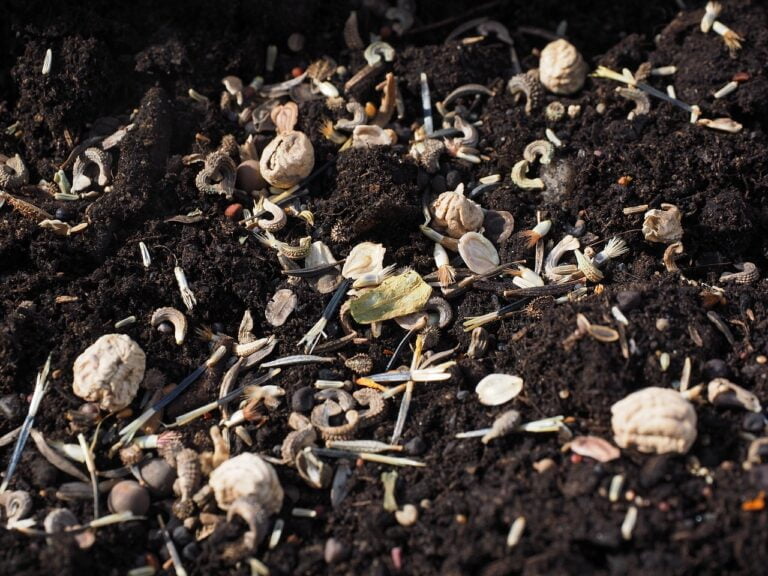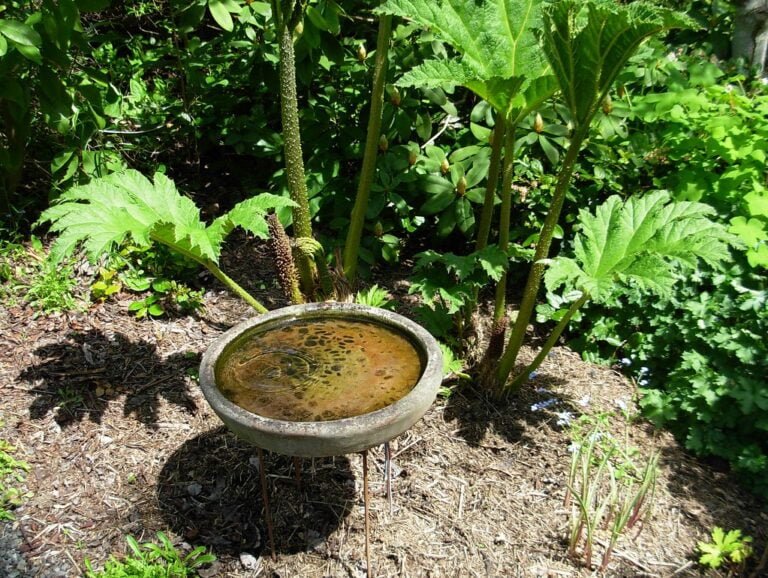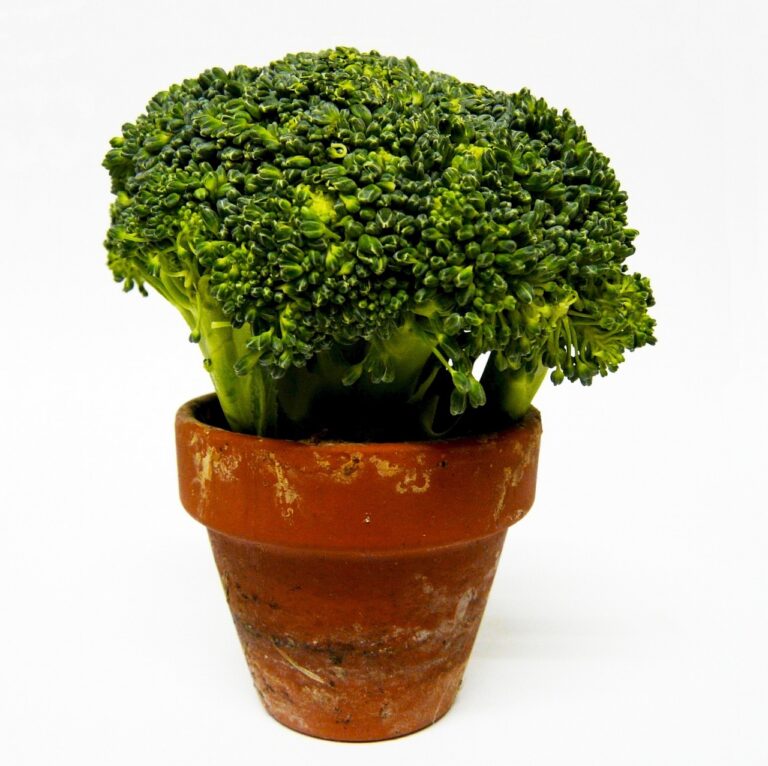Guide to Growing Tomatoes in Bags
Growing tomatoes in bags is a smart way to boost root development, improve drainage, and improve air circulation for a bountiful harvest. Choose fabric or DIY bags for breathability. Preparing nutrient-rich soil is essential, along with selecting suitable tomato varieties. Regular watering, fertilizing, and pest monitoring are important. Providing 8 hours of daily sunlight is vital, along with proper watering techniques and sturdy support. Incorporate pest control strategies like companion planting and beneficial insects. Deep watering once a week and adjusting based on weather conditions help maintain plant health. For more tips on successful tomato bag growing, investigate further.
Benefits of Growing Tomatoes in Bags
Cultivating tomatoes in bags boosts root development by encouraging air pruning, resulting in sturdy and highly productive plants. When tomatoes are grown in bags, the roots are naturally air pruned as they reach the edges of the container. This air pruning process prevents roots from becoming root-bound and circling the container, as seen in traditional pots. As a result, the plants develop a dense network of healthy roots that efficiently absorb nutrients and water, supporting robust growth and abundant fruit production.
The use of bags for growing tomatoes also improves air circulation around the root zone. The porous nature of the bag material allows excess moisture to drain easily, preventing waterlogged soil conditions that can lead to root rot. This enhanced drainage helps maintain ideal soil moisture levels, promoting healthier root systems and reducing the risk of fungal diseases commonly associated with overwatering.
Additionally, growing tomatoes in bags is a space-saving and portable solution for home gardeners. Bag cultivation is particularly advantageous for those with limited gardening space, such as balconies or small patios. The lightweight and portable nature of grow bags enable easy movement to optimize sunlight exposure throughout the day, resulting in stronger, more resilient plants and extended harvest periods.
Types of Grow Bags
When exploring the varieties of grow bags for cultivating tomatoes, it is important to evaluate different options that meet the specific requirements of the plants and the growers. Fabric Grow Bags are an excellent choice as they are breathable, sturdy, and equipped with handles for easy transportation. These bags promote good airflow, which is essential for the roots’ health, and they facilitate air pruning, leading to healthy root systems. On the other hand, Plastic Grow Bags, while less breathable, can also be used, but they may become brittle over time.
5 Gallon Buckets, although commonly available, are generally too small for tomatoes with extensive root systems, limiting their growth potential. For those looking for a more customizable option, DIY Tomato Grow Bags can be crafted from various materials like woven baskets, feed bags, or compost bags with growing rings. These DIY bags offer flexibility and creativity in design while still providing the benefits of traditional grow bags.
Steps for Growing Tomatoes
Before growing tomatoes in bags, it’s essential to prepare the soil properly, ensuring it’s rich in nutrients for healthy plant development. Selecting the right tomato varieties suited for bag growing is key to optimize space and yield. Consistent watering, fertilizing, and monitoring for pests are important steps to nurture thriving tomato plants in grow bags.
Soil Preparation Tips
To guarantee maximum growth and development of tomato plants in grow bags, select a high-quality potting mix with exceptional drainage properties. It is vital to make sure the soil in the grow bags is loose and well-aerated to promote healthy root development. Adding compost or organic matter can provide necessary nutrients for the tomato plants. Periodically loosening and aerating the soil in the grow bags helps avoid compacted soil, which can hinder plant growth. Maintaining proper moisture levels is important; water consistently to prevent waterlogging in the soil. By following these soil preparation tips, you can create an ideal environment for your tomato plants to thrive and produce a plentiful harvest.
Choosing Tomato Varieties
For ideal growth and successful cultivation of tomatoes in grow bags, the choice of suitable tomato varieties plays an essential role in determining the plant’s development and fruit production potential. Determinate tomatoes are recommended for compact growth and easier management in grow bags, while indeterminate varieties are better suited for continuous fruiting and trellis support in larger grow bags. Cherry tomato varieties, with their compact size and prolific fruiting, are ideal for small grow bags. On the other hand, beefsteak tomato varieties, requiring larger grow bags to accommodate extensive root systems and support heavy fruits. Heirloom tomato varieties are selected for their unique flavors and characteristics, with the grow bag size adjusted accordingly to meet their growth requirements.
Watering and Care
Ensuring peak growth and fruit production in tomatoes cultivated in grow bags requires a meticulous approach to watering and care. Water tomato plants deeply once a week to promote robust root growth. It’s important to monitor soil moisture levels regularly and adjust watering frequency accordingly. Overwatering should be avoided to prevent root rot and guarantee healthy plant development. Providing consistent moisture, especially in hot weather, is essential for best growth. Mulching around tomato plants helps retain soil moisture and reduce evaporation, contributing to the overall health of the plants. Remember to practice deep watering and keep a close eye on the soil moisture to maintain a thriving tomato crop in grow bags.
Tips for Successful Growth
Choosing specific tomato varieties is essential for successful growth in grow bags because of their compact nature. Determinate varieties are ideal for limited spaces, ensuring the plants don’t outgrow the bags. To support tomatoes effectively, provide sturdy cages or trellising to prevent them from bending or breaking under the weight of the fruit. Additionally, ensuring the plants receive at least 8 hours of direct sunlight daily is important for best growth and fruit production.
To promote healthy growth and high yields, fertilize tomato plants every 2-3 weeks with organic fish emulsion. This provides essential nutrients without the risk of chemical buildup that can harm the plants. Watering tomatoes correctly is also crucial; in hot weather, water them daily or even twice daily to prevent dehydration and maintain consistent growth. Proper watering helps prevent issues like blossom end rot and cracking in the fruit.
Common Grow Bag Questions
To maximize the success of growing tomatoes in bags, addressing common questions that arise regarding the use of grow bags is essential. When selecting the appropriate grow bags for tomatoes, size plays a key role. Popular options include 5, 7-10, and 15-20 gallon bags. Fabric grow bags are a top choice due to their breathability and durability, which foster healthy root systems. On the flip side, plastic grow bags are less breathable and may become brittle over time, impacting plant health.
Grow bags with growing rings offer additional benefits by providing extra depth for compost and root growth. These rings are particularly valuable for tomatoes, as they develop extensive root systems. If you’re seeking more cost-effective alternatives, DIY options like using woven baskets or repurposing compost bags with growing rings can be effective substitutes.
When considering the soil for your tomato plants in grow bags, it’s crucial to select a well-draining mix specifically formulated for container gardening. This type of soil will prevent waterlogging and allow air to reach the roots. Additionally, regularly checking the root health of your plants is important. Over time, you may need to repot your tomatoes into larger grow bags to accommodate their expanding root systems and ensure continued growth and productivity.
Additional Tomato Bag Growing Tips
When growing tomatoes in bags, it’s important to maintain proper watering frequency to prevent issues like blossom end rot. Selecting the appropriate soil mix rich in nutrients and organic matter is essential for healthy tomato growth. Implementing efficient pest control strategies can help protect your tomato plants from common threats like aphids and hornworms.
Watering Frequency Tips
Maintaining proper watering frequency is essential for successfully growing tomatoes in bags, as it promotes deep root development essential for plant health. Here are some key tips for watering tomato plants in grow bags effectively:
- Water tomato plants deeply once a week to encourage deep root growth.
- Adjust watering frequency based on weather conditions to prevent issues like waterlogging or drought stress.
- Use a moisture meter to accurately determine when to water your tomato plants in grow bags.
- Avoid overhead watering to minimize water splashing and reduce the risk of disease spread.
Choosing Right Soil
For successful tomato cultivation in grow bags, the selection of the appropriate soil is essential. Opt for a well-draining potting mix designed for tomato plants in grow bags, enriched with compost for nutrients and organic matter. Avoid using heavy clay soils that can lead to waterlogging issues. Look for soil mixes that contain perlite or vermiculite to improve aeration within the grow bags. It is vital to maintain the soil pH level between 6.0-6.8 for ideal tomato growth. By ensuring the right soil conditions, you create a conducive environment for your tomato plants to thrive, promoting healthy root development and robust growth in the confined space of grow bags.
Pest Control Strategies
To effectively combat pests in your tomato bag garden, consider implementing a combination of companion planting techniques and natural predator introductions. Here are some strategies to help you protect your tomatoes in grow bags:
- Companion Plants: Utilize marigolds to deter pests like nematodes.
- Beneficial Insects: Introduce natural predators such as ladybugs and lacewings for pest control.
- Row Covers: Shield your tomato plants from common pests like aphids and caterpillars.
- Organic Pest Control Methods: Apply neem oil or diatomaceous earth to combat pests effectively.
Remember to regularly inspect your tomato plants for any signs of pest damage and take prompt action to prevent infestations from escalating.






